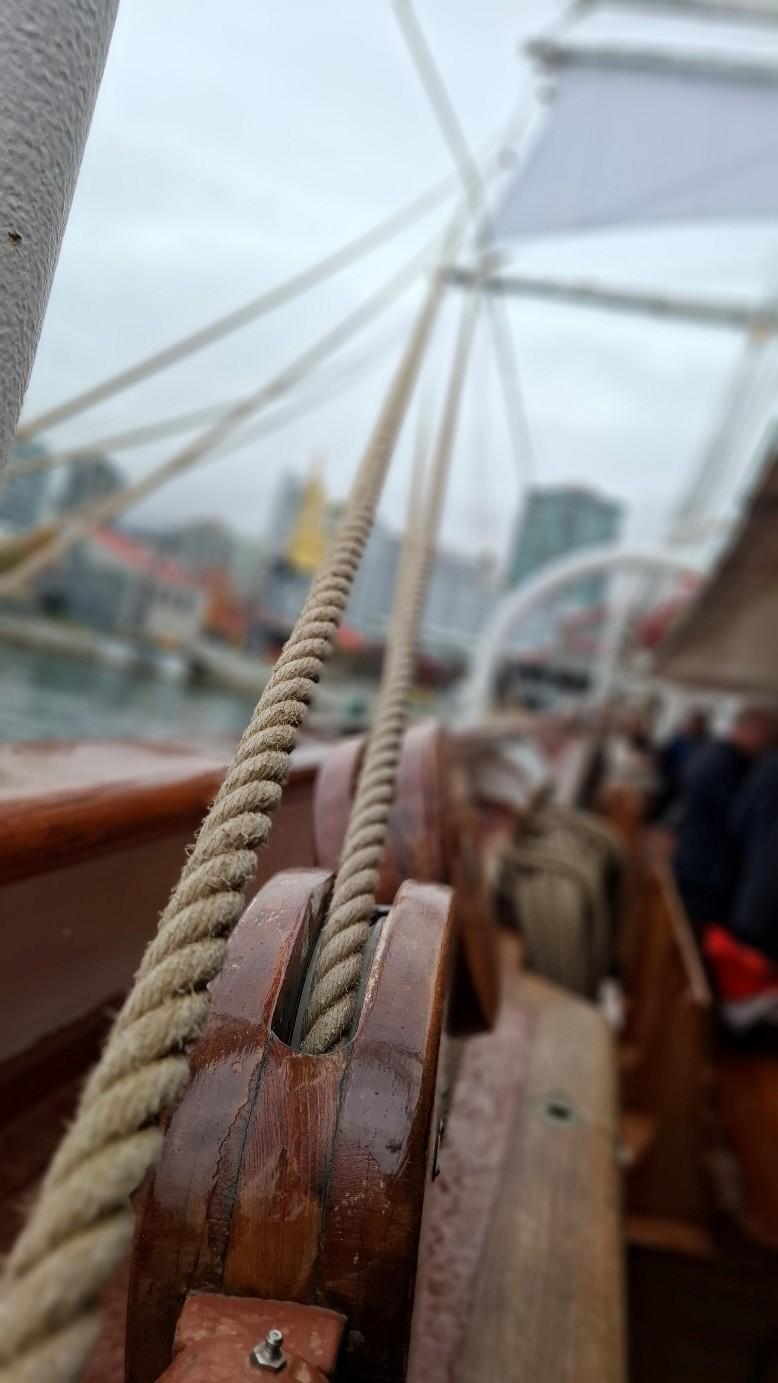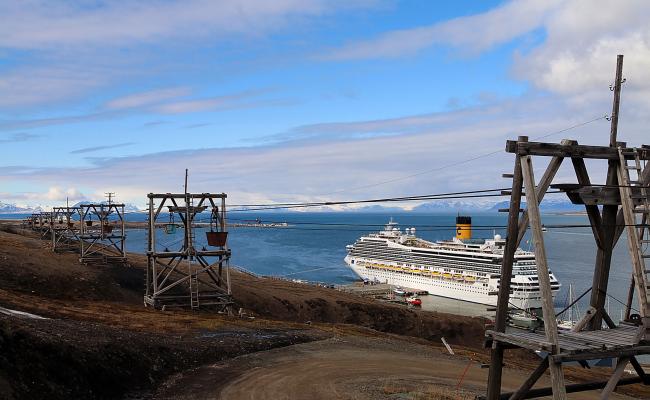Op-ed: One Ocean Expedition: Highlighting Social Dimensions of Safe and Green Shipping

Statsraad Lehmkuhl at the quay with downtown Vancouver as a backdrop. Credits: Roberto Rivas Hermann
Op-ed: During last week’s activities on the Statsraad Lehmkuhl, attention centered on maritime safety in the Arctic, bridging science and society, and advancing comprehensive approaches to ocean research. Nord University contributes to this emerging dialogue, writes Roberto Rivas Hermann and Julia Olsen at Nord University.
This is an op-ed written by external contributors. All views expressed are the author's own.
Sailing Between Oceans
Statsraad Lehmkuhl: built in 1914 and today Norway’s largest and most active sail-training vessel, has been sailing around the world as part of the One Ocean Expedition, a circumnavigation aligned with the UN Decade of Ocean Science for Sustainable Development (“the Ocean Decade”).
During its stopover at the Vancouver harbour on October 18th and 19th, 2025, it hosted the visiting public, as well as a joint event involving Norwegian and Canadian industry and academic stakeholders under the banner “Safe and Green Maritime Activities.” The event was hosted by Arctic Frontiers Abroad – Vancouver and co-organized with the Royal Norwegian Embassy in Ottawa.
During the event, a joint academic, policy, and industry panel focused on climate change in the Arctic, navigation safety, and the green transition, as well as the role of local and Indigenous voices, and hinterland transportation corridors.
The Vancouver Dialogues
The Vancouver edition of Arctic Frontiers Abroad built bridges across geography and disciplines. The panels gathered interdisciplinary researchers, Indigenous leaders, industry representatives, and policy officials from both sides of the Arctic.
All panels focused on the Norwegian-Canadian vision of “Sailing amongst declining sea ice,” “Safe maritime activities,” and “Green and Blue Business Opportunities”.

Photo taken aboard Statsraad Lehmkuhl. (Photo: Roberto Rivas Hermann)
What constitutes safe shipping in a changing Arctic Ocean was discussed by Hilu Tagoonarom Oceans North, Anita Lafferty from the University of Alberta, and us from Nord University.
The dialogue centered on the impacts of shipping on the Arctic environment and local and Indigenous communities. The decrease in sea-ice coverage affects not only shipping possibilities but also the lives of coastal and Indigenous communities.
From the Canadian side, speakers described efforts to develop Low-Impact Shipping Corridors, routes co-designed with Inuit organizations to minimize risks for both wildlife and people, as well as the importance of integrating Indigenous knowledge into shipping governance.
Drawing on our research project in the European Arctic, we highlighted the fact that shipping serves a complex “cocktail” of pollutants affecting both air and water. In addition to marine litter, chemical and pharmaceutical pollution is released through the discharge of black and grey water from vessels. Also, substances from ship paints can contaminate the marine environment.
Furthermore, our research in Northern Scandinavia has unveiled new development trends on land. We discussed the emerging concept of Arctic transport corridors in the Nordkalotten region, linking the Barents Sea with the Gulf of Bothnia through northern Finland, Sweden, and Norway.
These corridors are not only logistical systems but also spaces of unfolding interests where state visions for regional development intersect with local livelihoods and reindeer herding.
We emphasized that corridor planning must integrate community participation and scientific research from the very beginning, rather than treating them as parallel processes. This is an important experience that Canada has in contrast with Northern Scandinavia.
The decrease in sea-ice coverage affects not only shipping possibilities but also the lives of coastal and Indigenous communities.
Science, governance, and adaptation
The panel’s dialogue reminded us that science and governance must evolve together. In both Canada and the Nordic Arctic, large international projects rely on stable governance regimes for science. The importance of the Arctic Council’s work should not be underestimated.
Even in the face of shifting geopolitical dynamics, scientific cooperation remains a vital pillar of Arctic governance, as environmental problems, marine species, and climate change transcend geographical borders.
At the same time, past and ongoing research improves our understanding of environmental problems and the impact of pollutants. This growing body of knowledge can support the development of national and local responses — such as restricting or rerouting shipping in sensitive areas and increasing funding for environmental monitoring (both by scientists and communities across the Arctic).
This is a topic we address in the Nord University-led Horizon project, Arcsolution (ArcSolution – Arctic pollution in a One Health perspective – from complex challenges to sustainable solutions). Roberto Rivas Hermann introduced the Arctic Six Alliance to the audience in the context of a question concerning transportation Corridors in Arctic regions.
In concrete terms, the chair studies how environmental policy, logistics, and governance converge in northern Scandinavia.
Illustrating this topic, the panel exchanged ideas on how research priorities often evolve, and this is just one case where sustainability questions leave room for more recent concerns about security and resilience. Maintaining research continuity under such moving priorities requires flexibility and international cooperation, precisely what the UN Ocean Decade encourages.
Shared Currents
As the Statsraad Lehmkuhl prepared to continue its journey south toward Seattle, conversations on deck and ashore made a lasting impression.
The Arctic and the global ocean are linked not only by currents but also by people: researchers, Indigenous experts, mariners, and students. Whose cooperation shapes the future of northern seas.
For us, the Vancouver stop was both a field experience and a reminder that ocean and Arctic research cannot remain in silos, but require a holistic science-industry-policy interface to address most emerging challenges of our time.
Whether in the Arctic Ocean, the Barents–Bothnia corridor, or the Northwest Passage, the same questions echo: How can communities benefit from maritime development? How can we effectively address the negative impacts? How can science remain credible and inclusive amid rapid change? And how can governance strike a balance between opportunity and stewardship?



